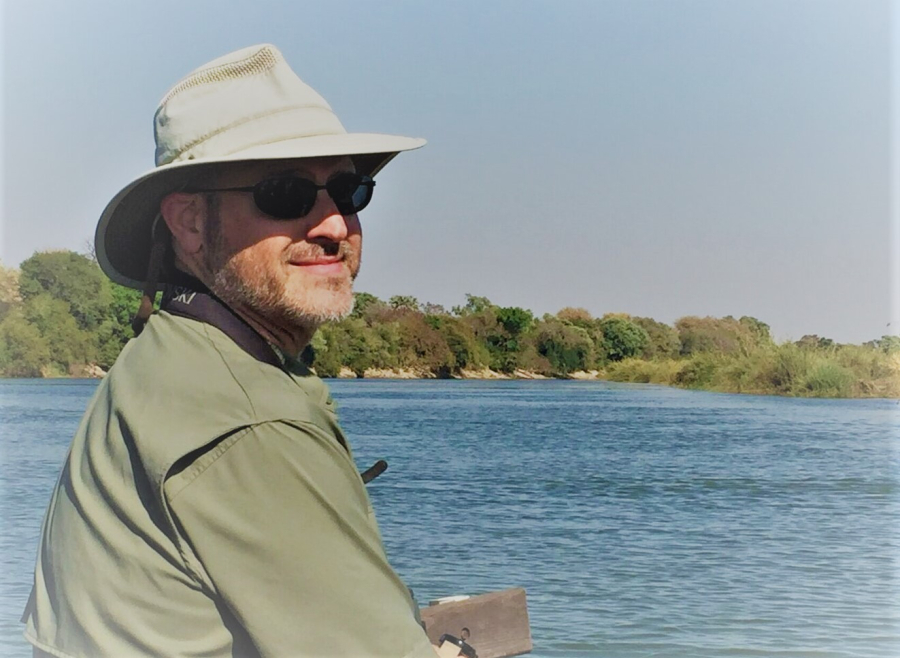My Clean Water Story: Jeff Lerner
Connecting wildlife conservation with water quality

Over 30 years ago, I was given my first field assignment to survey bald eagle habitat in Montana.
At the time, there were only about 2,000 bald eagles in the entire country. My work with the U.S. Forest Service at the Custer Gallatin National Forest was focused on finding out where eagles were nesting or hunting, and whether that habitat was secure. The Gallatin, which is adjacent to Yellowstone National Park, includes Hebgen and Earthquake lakes and is part of the largely intact 22-million-acre Greater Yellowstone Ecosystem. Bald eagles primarily eat fish, so much of their habitat is along waterways, lakes, rivers, wetlands and coastlines. Like many wildlife, they illustrate the inherent connection between land and water.
Over time, bald eagles would become one of America’s greatest wildlife conservation successes. There are now more than 300,000 bald eagles in the country, many of which nest along the Chesapeake Bay and its tributaries. Their recovery is largely due to a 1972 ban on the pesticide DDT, which was washing into waterways, contaminating fish and ultimately causing eggshells to thin among eagles and other raptors who ate those fish, leading to reproductive failure.
When I first moved to the Washington D.C. area and into the Chesapeake Bay watershed over 25 years ago, one of the first places I visited was Blackwater National Wildlife Refuge because I knew I could see many eagles there. At the time I was working with The Nature Conservancy managing national data on biodiversity in partnership with state Natural Heritage Programs. After that I served as the Director of Conservation Planning for Defenders of Wildlife. And in 2010, I began working with The Conservation Fund, with one of my projects being based at Blackwater National Wildlife Refuge. I, and several partners, helped the refuge plan for climate change, sea level rise and marsh migration for the benefit of many tidal marsh birds. Ironically, by that time bald eagles were not a target species because of their successful recovery.
My connection to clean water evolved over time and came from my experience with wildlife conservation. As a conservation planner, I have known for some time that habitat loss, degradation and fragmentation are key drivers for biodiversity loss and that we can address those challenges with strategic planning. Protecting and restoring habitat is key for biodiversity but it also contributes to improved water quality and watershed health. In fact, it is far cheaper to protect intact parts of our landscape than to restore them once degraded. One of the best ways to do this is to strategically map out hubs of intact habitat and corridors connecting them—sometime referred to as green infrastructure mapping. Many of the Bay jurisdictions, including Maryland, Virginia and Delaware, have mapped green infrastructure, which helps guide land conservation in a way that benefits wildlife, biodiversity and watershed health.
The connection between watersheds and wildlife habitat led me to join the Environmental Protection Agency’s (EPA) Office of Wetlands, Oceans and Watersheds to advance watershed scale partnerships. I did that initially through a national effort called the Healthy Watersheds Consortium which supported watershed scale protection efforts around the country, protecting millions of acres and thousands of stream miles. Part of my work at EPA headquarters involved coordinating the agency’s Geographic Programs which include powerful partnership programs like the Chesapeake Bay Program, where I also serve as chair of the Healthy Watersheds Goal Implementation Team.
In 2023, I had the honor of serving as interim chief for the Partnerships and Accountability Branch within the Chesapeake Bay Program. It was a great opportunity to learn more about the EPA’s federal and state agency partners and understand how the Bay Program is structured from the inside toward achieving our watershed-wide goals. It is refreshing to know that together we have many shared interests in water quality, including the living resources that make up the biodiversity of our watershed. And together our efforts toward the protection and improvement of the Chesapeake Bay provide many ecosystem benefits to all the people that live within its watershed boundaries.
I’ve watched birds for decades, but it was fascinating to see the number of people getting into birding during the pandemic. When we were forced to pause many of our regular activities, many of us turned toward nature. Birders are keen observers, and more birders means more people making the land, water and wildlife connection.
My work continues to be national in scope and all our communities need healthy watersheds, not only for our biodiversity but also our own water resource needs. For as long as I live here in the Washington D.C. metro area, the Chesapeake Bay will be my backyard and the most immediate connection that I have between nature and clean water. Bald eagles will always hold a special place for me, and I expect those in the Chesapeake Bay to be thriving for many years to come.

Comments
There are no comments.
Thank you!
Your comment has been received. Before it can be published, the comment will be reviewed by our team to ensure it adheres with our rules of engagement.
Back to recent stories